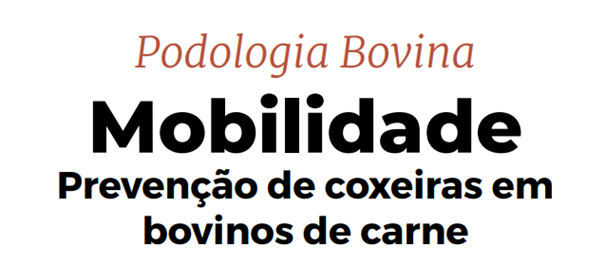
https://ec.europa.eu/eip/agriculture/en/find-connect/projects/bovine-beef-innovation-network-europe
Lameness is an animal health problem that can have a major impact. In order to avoid a heavy burden on animal health, animal welfare and, ultimately, the economy of the company, correct management is crucial. Good lameness management includes early detection of the problem and timely and correct treatment. A study with beef farmers in the UK showed that this is often a problem. In addition to difficulties in recognizing lameness, there is often a lack of knowledge about the various hoof diseases, their far-reaching impact on animal health and welfare and the possibilities for treatment.
Starting point to improve claw health in beef cattle is the prevention of frequent causes for lameness. Thus, a balanced diet and suitable bunk management are important (see ruminal acidosis) as so are dry and clean claws. Furthermore, the early detection of lameness with the help of a standardized scoring system (see scoring lameness) or possibly with an automated solution like infrared thermography (see infrared thermography) can be a good step for improvement. The differentiation of claw problems is necessary and there are several management aids to support this (see EiKoTiGer or Digital Dermatitis: an expert vision of foot pathology).
If claw health on a farm can be improved by appropriate prevention and/or early detection of problems, costs will decrease and income will increase. An important and difficult aspect of implementing these measures is to take action before a problem occurs. As a result, the success of the measures is sometimes not immediately apparent. Success in this case means a higher animal comfort and a better general condition of the animals through simple measures such as dry bedding or well dried walking surfaces through appropriate ventilation. This results in a better product (meat) because mobile animals grow better and faster.
Management and prevention are the keywords for good hoof health in fattening!
Literature:
Touret, R. (2019): Mobilidade Prevenção de coxeiras em bovinos de carne http://www.limousineportugal.com/revista_acl_2019.pdf (Page 108)
Tunstall, J. (2019): Lameness in Beef Cattle: UK Farmers' Perceptions, Knowledge, Barriers, and Approaches to Treatment and Control. https://www.frontiersin.org/articles/10.3389/fvets.2019.00094/full
This Research Innovation has an Impact on:
- Animal health and welfare: An increase in knowledge about perception, treatment and control of lame animals will increase animal health and welfare.
- Production efficiency and meat quality: Healthy animals are more efficient, an increase in claw health will increase production efficiency.
- Environmental sustainability: The feed efficiency is higher in healthy animals, the prevention or early detection of claw problems will increase the environmental sustainability of the beef cattle production.
